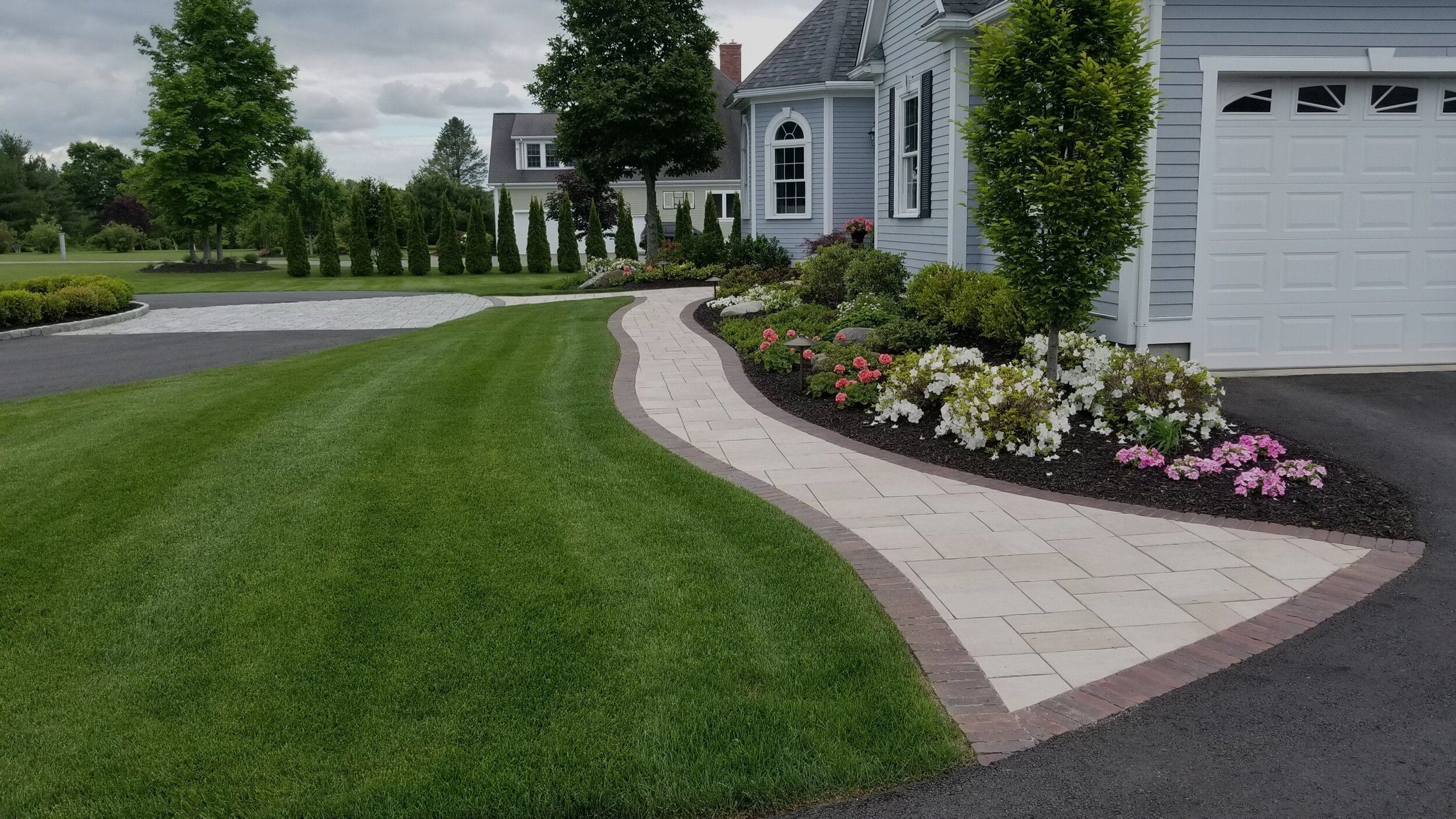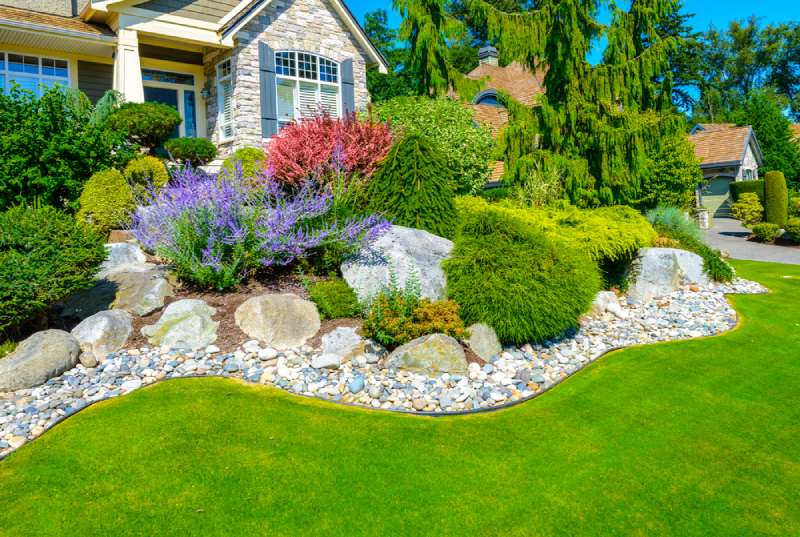Update Your Property with Customized Palm Desert Landscaping Solutions
A Comprehensive Overview to Designing and Implementing Effective Landscape Design Solutions
The art and science of landscape design extend beyond plain aesthetics; they entail a thoughtful combination of layout concepts, environmental stewardship, and functional execution. What strategies can one utilize to guarantee these landscapes not just prosper however likewise grow in consistency with their environments?

Recognizing Landscape Design Principles
One could question what foundational aspects contribute to effective landscape style. At its core, effective landscape layout rests on numerous essential principles that direct the plan and option of aspects within a space. These concepts consist of unity, proportion, equilibrium, and rhythm, each serving to develop a harmonious outdoor setting.
Unity refers to the cohesive relationship amongst various components, ensuring that they function with each other aesthetically and functionally. Balance can be accomplished via asymmetrical or in proportion arrangements, allowing the landscape to feel secure and inviting. Proportion includes recognizing the range of elements in relationship to each other and the surrounding setting, promoting visual consistency and comfort.

Evaluating Your Outdoor Area
Before applying the concepts of landscape layout, an extensive analysis of your exterior room is essential. This first evaluation aids define the range of your landscaping project and ensures that your layout straightens with the distinct qualities of your building. Begin by evaluating the dimensions of your area, taking specific measurements to recognize the offered location for different components such as pathways, patios, and gardens.
Next, observe the existing features of your landscape, consisting of topography, soil quality, and drain patterns. These elements significantly affect plant choice and placement. Additionally, assess the sunlight direct exposure throughout different areas throughout the day, as this will certainly affect the kinds of plants that flourish in your yard.
Think about the microclimates developed by frameworks, trees, and other obstacles, as they can impact temperature level and wetness levels. Take note of any type of existing plants or hardscape aspects that you wish to get rid of or maintain. This comprehensive analysis lays the groundwork for a well-informed and efficient landscape design option, making certain that your design is not just visually pleasing but additionally useful and sustainable for several years ahead.
Lasting Landscaping Techniques
Integrating sustainable landscape design strategies is essential for developing an ecologically accountable exterior room. These methods not only advertise ecological equilibrium however also improve the aesthetic and functional value of a landscape. One foundational technique is the usage of native plants, which call for much less water and maintenance while supporting local wild animals. Applying effective watering systems, such as drip irrigation, lessens water waste and ensures that plants get ample dampness.

Another reliable technique is the strategic placement of shrubs and trees to supply all-natural windbreaks and shade, therefore lowering power prices (Palm Desert Landscaping). Rain yards can be integrated into the landscape layout to manage stormwater overflow successfully, filtering contaminants before they get in waterways
Selecting the Right Plant Kingdoms
Selecting the right plants for your landscape is crucial to attaining both aesthetic allure and eco-friendly consistency. The procedure begins with an understanding of your visit here local environment, soil conditions, and the details microenvironments within your landscape. Examining variables such as sunshine exposure, wetness levels, and existing plants will certainly aid you select plants that thrive in your unique setup.
Take into consideration including native plants, as they are well-adapted to regional conditions, need less upkeep, and assistance regional wild animals. Additionally, selecting a varied array of species can enhance biodiversity while lowering the danger of condition and parasite episodes. It is necessary to examine the development practices, blooming durations, and seasonal colors of prospective plants to develop a natural and vibrant landscape.
Moreover, consider the planned use of the room; for instance, if the area will certainly experience high foot website traffic, select durable ground covers. By thoughtfully selecting plants that straighten with both your aesthetic goals and ecological needs, you can develop a lasting landscape that not only boosts your building yet additionally adds positively to the bordering community.

Implementation and Upkeep Techniques
As soon as the right plants have been selected for your landscape, the emphasis moves to reliable execution and ongoing upkeep methods. Effective installment starts with appropriate website preparation, that includes soil screening to figure out nutrient levels and pH, adhered to by amending the dirt as needed. Thoroughly arrange plants according to their development routines and light demands, ensuring appropriate spacing to promote healthy growth.
Irrigation is a vital aspect of execution. Establish a watering schedule that considers the details requirements of each plant species, adjusting for seasonal changes. Using drip irrigation systems can boost water performance and decrease like this runoff.
Maintenance techniques must be implemented to make sure the longevity and vitality of your landscape. Normal tasks consist of weeding, mulching, and trimming to regulate growth and protect against condition. Fertilizing should be performed based upon soil examinations, offering the required nutrients without over-fertilizing.
Keeping track of for bugs and illness is necessary; early detection can stop significant damage. Last but not least, seasonal adjustments to maintenance regimens, such as preparing and winterizing perennials for spring growth, will certainly guarantee that your landscape continues to be visually attractive and healthy year-round.
Conclusion
Effective application my sources and continuous upkeep better make certain the longevity and vitality of landscapes. By incorporating these aspects, landscapes can be transformed right into attractive, functional environments that promote biodiversity and contribute favorably to area health.
One may wonder what fundamental aspects add to reliable landscape style. At its core, successful landscape design pivots on a number of essential principles that guide the setup and option of aspects within an area.Picking the right plants for your landscape is crucial to accomplishing both aesthetic charm and environmental consistency. It is vital to review the development behaviors, flowering durations, and seasonal colors of prospective plants to create a natural and vibrant landscape.
Once the ideal plants have been chosen for your landscape, the focus shifts to effective implementation and recurring maintenance methods.